On a recent Friday morning in Alianza Industrial Park, dust billowed up as diggers and lorries cleared land near a site for Chinese tyre maker ZC Rubber. A crane was poised to lift material for lithium and lead battery maker Leoch. A sign at its entrance welcomed another new firm in Mandarin and English.
Germany’s Daimler Truck and multinational giant Stellantis have been making vehicles on adjacent sites for more than a decade. On the surrounding land, suppliers from Europe and the US produce everything from windows to wire harnesses.
Alianza is one of multiple sites in Mexico with a growing Chinese presence that seeks to take advantage of the country’s free trade agreement with the US and Canada, known as USMCA.
That has drawn the attention of politicians in Washington and Ottawa, just as president-elect Donald Trump threatened Mexico’s government with 25 per cent tariffs if it cannot stop the flow of migrants and drugs north.
FT analysis shows that over the past few years, Chinese companies have established themselves deeper into supply chains, developed stronger trade links and increased manufacturing in Mexico.
“From a purely economic perspective, significant Chinese investment activity in Mexico is going to raise alarm bells in DC,” says Connor Pfeiffer, director of congressional relations at US national security think-tank FDD Action.
“Mexico is right here, and they have a very different set of access to the US market than some of the other countries.”
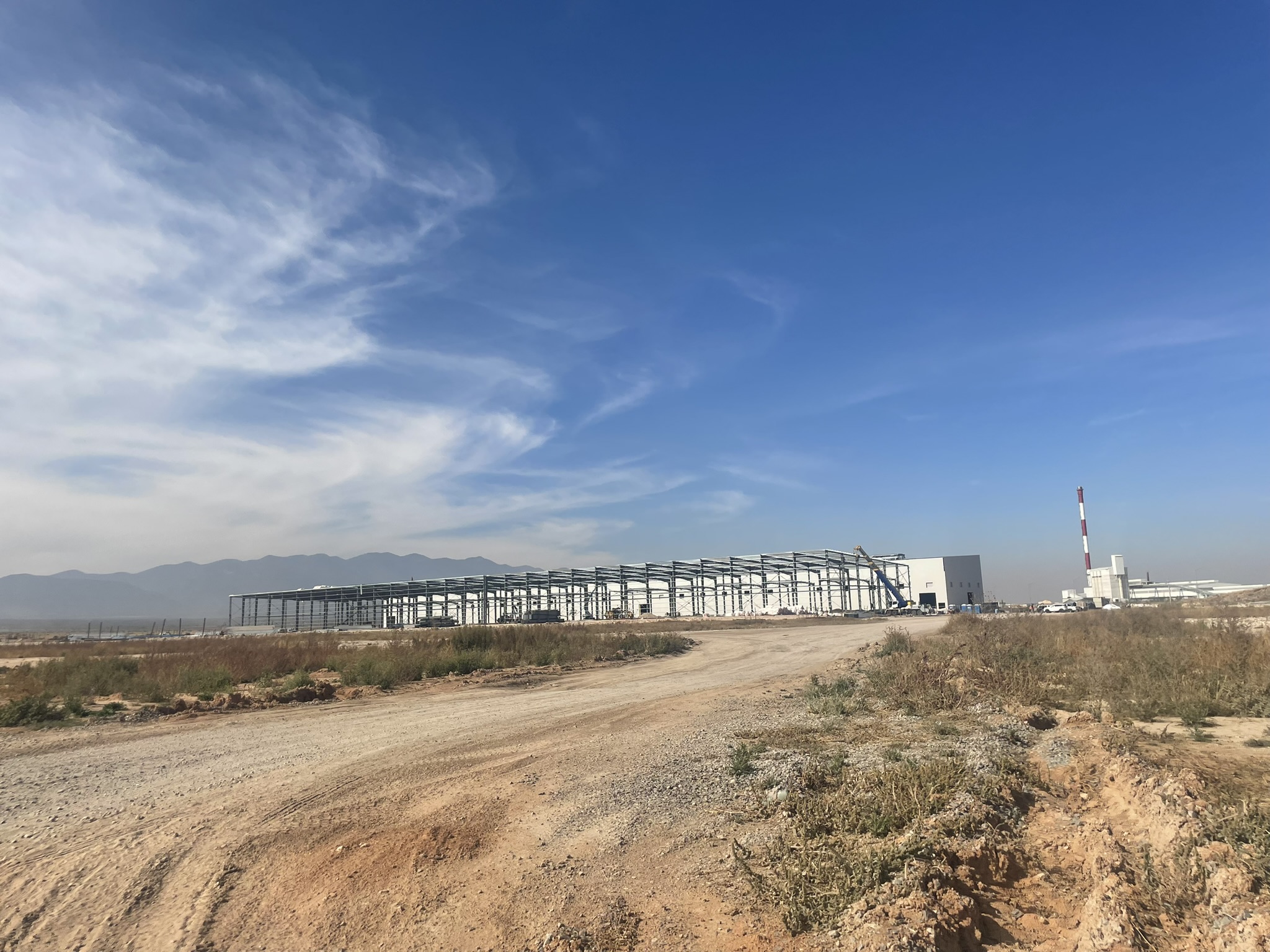
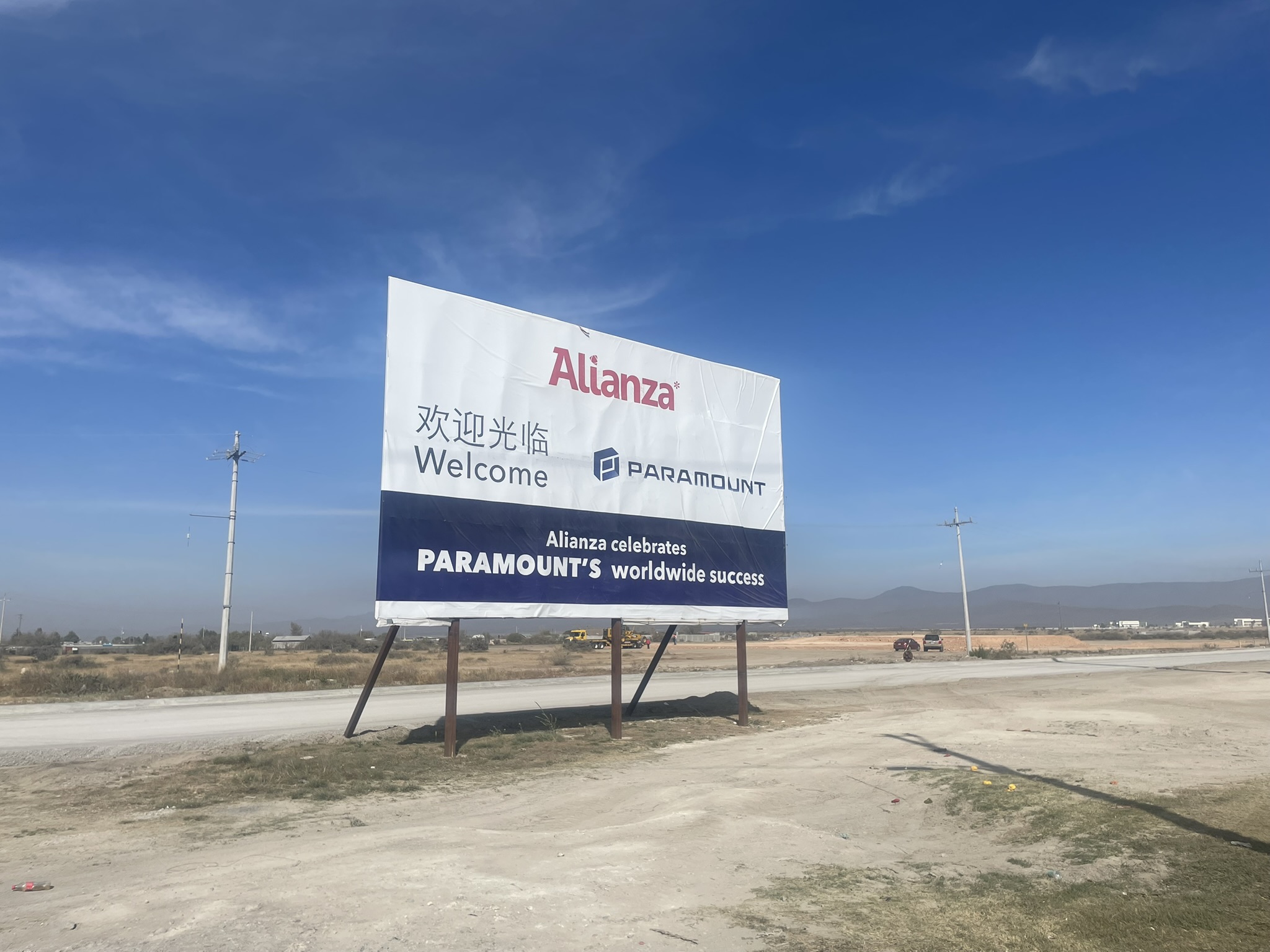
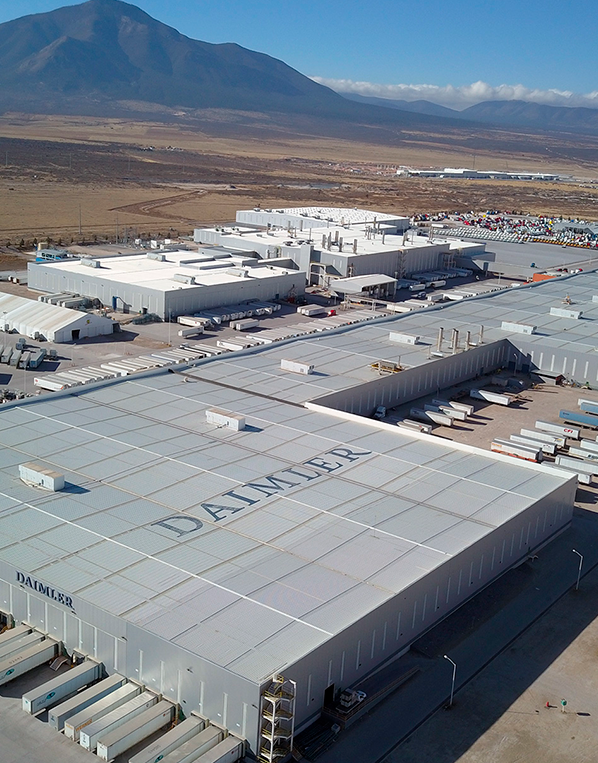
Although Chinese companies are investing in many countries to try to diversify their supply chains, including close neighbours such as Vietnam, Mexico’s proximity, trade access and centrality to other Trump priorities like migration and drugs put it squarely in the line of fire.
Trump’s pick for secretary of state, Marco Rubio, and Canadian Prime Minister Justin Trudeau have both expressed concerns that China is using Mexico to circumvent tariffs.
The USMCA, which underpins trade between the three nations, is up for review in 2026, with China’s present and future role in supply chains likely to be central.
Mexican government statistics show investment from China and Hong Kong was $450mn last year, less than 2 per cent of the total. But data from external research providers suggests China is likely to be a more significant investor than official figures suggest.
Chinese groups in Mexico occupy twice as much industrial space as they did three years ago, figures from property analytics company SiiLA show. While they make up just 3 per cent of tenanted industrial space, according to the latest numbers, they have filled 7 per cent of the absorbed capacity since 2020, the third-largest behind US and Mexican firms.
Mexican business leaders point out that although there has been growth in Chinese investment, it is from a small base and the levels are far lower than in many South American nations.
But its growing presence and visibility is a challenge for Mexico’s new president, Claudia Sheinbaum, as she attempts to build a relationship with Trump.
“I really don’t think that the sudden increase in Chinese presence is the flood the US discourse suggests . . . but that doesn’t mean we should ignore it,” says Juan Carlos Baker, director of Ansley Consultores who previously ran foreign trade at the Mexican economy ministry.
When ZC Rubber started construction on its plant in Coahuila in August, state officials gifted company representatives a Mexican tapestry and a statue of the country’s coat of arms, an eagle perched on a prickly pear cactus fighting a rattlesnake. The company’s investment accounts for almost half of the more than $1bn promised by Chinese businesses in Alianza Industrial Park.
A month later, as another Chinese firm broke ground on its factory nearby, the officials cut red ribbons while traditional Mexican dancers put on a show.
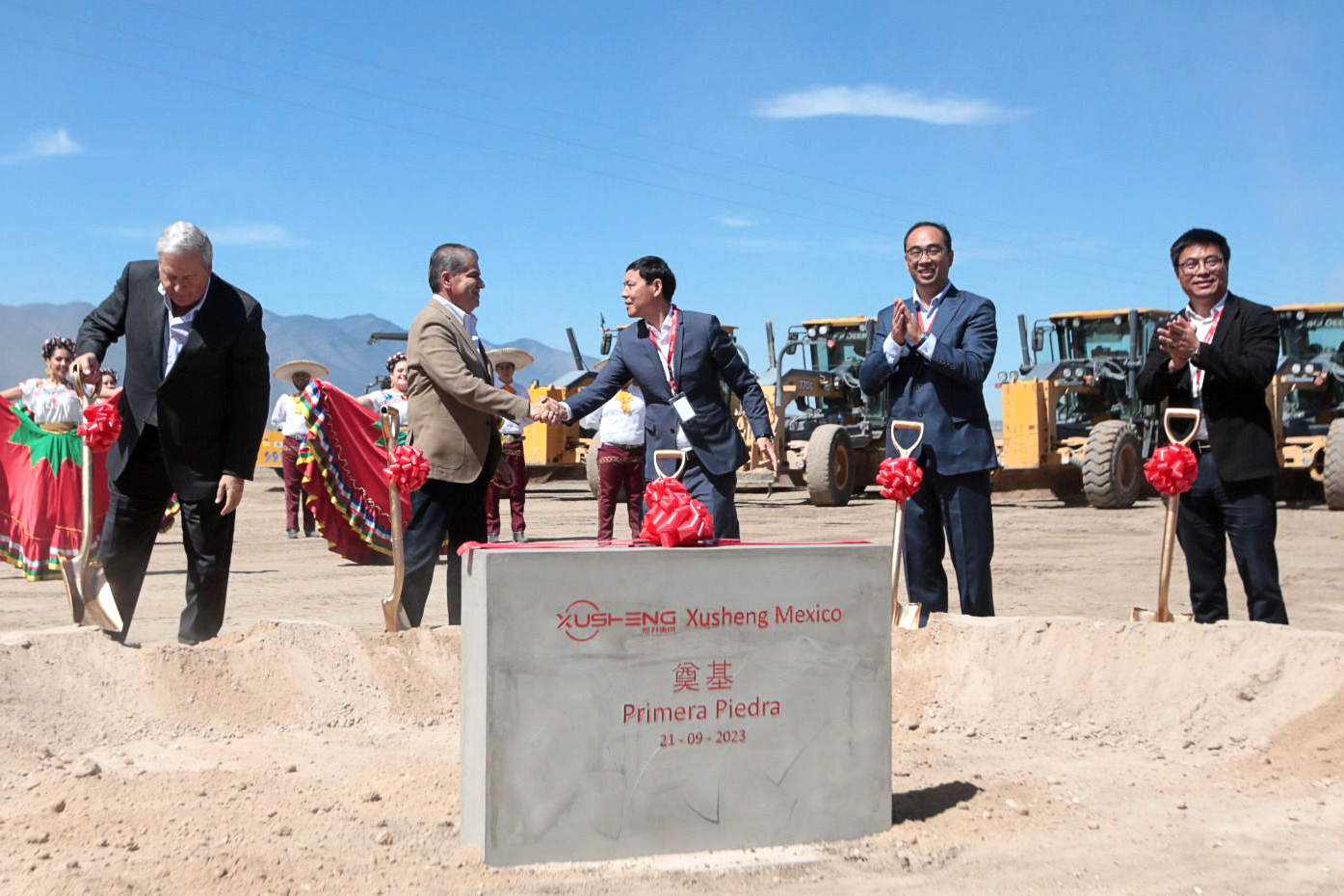
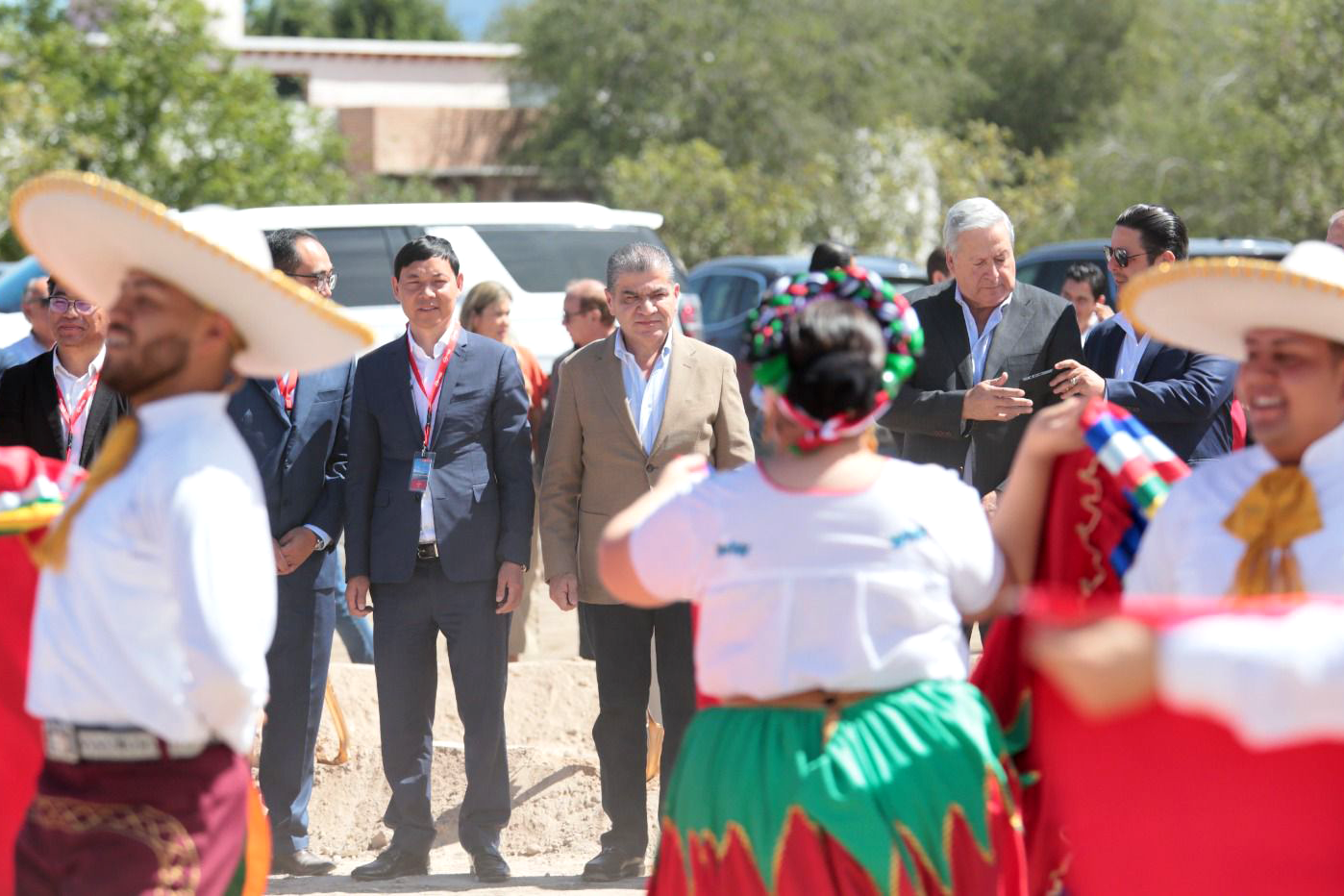
The state government of Coahuila — which shares a 512km border with Texas — has been particularly proactive with attracting Chinese business. Governor Manolo Jiménez went to the Beijing auto show this year touting the state’s advantages, which include efficient connections to the US and successful security policies.
“Whatever the country of origin, companies generally want local integration where they don’t struggle with infrastructure,” César Cantú, president of Grupo Alianza, which owns the park, says. “It’s not exclusive to Chinese or Japanese or American companies, companies that aim to sell in the biggest market in the world have to set up near that market.”
Government FDI data shows the state was the second-largest recipient of Chinese investment in 2023. That spending is part of a growing trend, but many experts believe the official FDI numbers undercount the true levels. Data from fDi Markets backs this up, suggesting that what is recorded is just a fraction of what is announced by Chinese companies.
In a recent report, consultants at Rhodium Group also estimated that the stock of investment could be six times higher than the government’s numbers.
It reflects well-known distortions and limitations of how FDI is counted, which presents a challenge for Mexico as it tries to address US concerns — and also decide what Chinese investments it will or will not allow due to fears of unfair competition or national security.
“When I worked in the economy ministry, this wasn’t something that really worried us,” Baker says, adding that he thinks Mexico needs to change its laws to track investment more closely. “If we don’t know the real number of Chinese investment, where it’s coming from and who is generating this capital, we should know.”
Inside the “‘Mexico Mart” shopping centre in downtown Mexico City, which has its full name in mandarin above the entrance, dozens of vendors sold Chinese imported goods on the cheap.
That was, until a government raid last month that shut it down as armed marines stood watch outside. The move was widely understood as a signal to the US that Mexico was willing to crack down on Chinese imports, though reducing them is not an easy task.
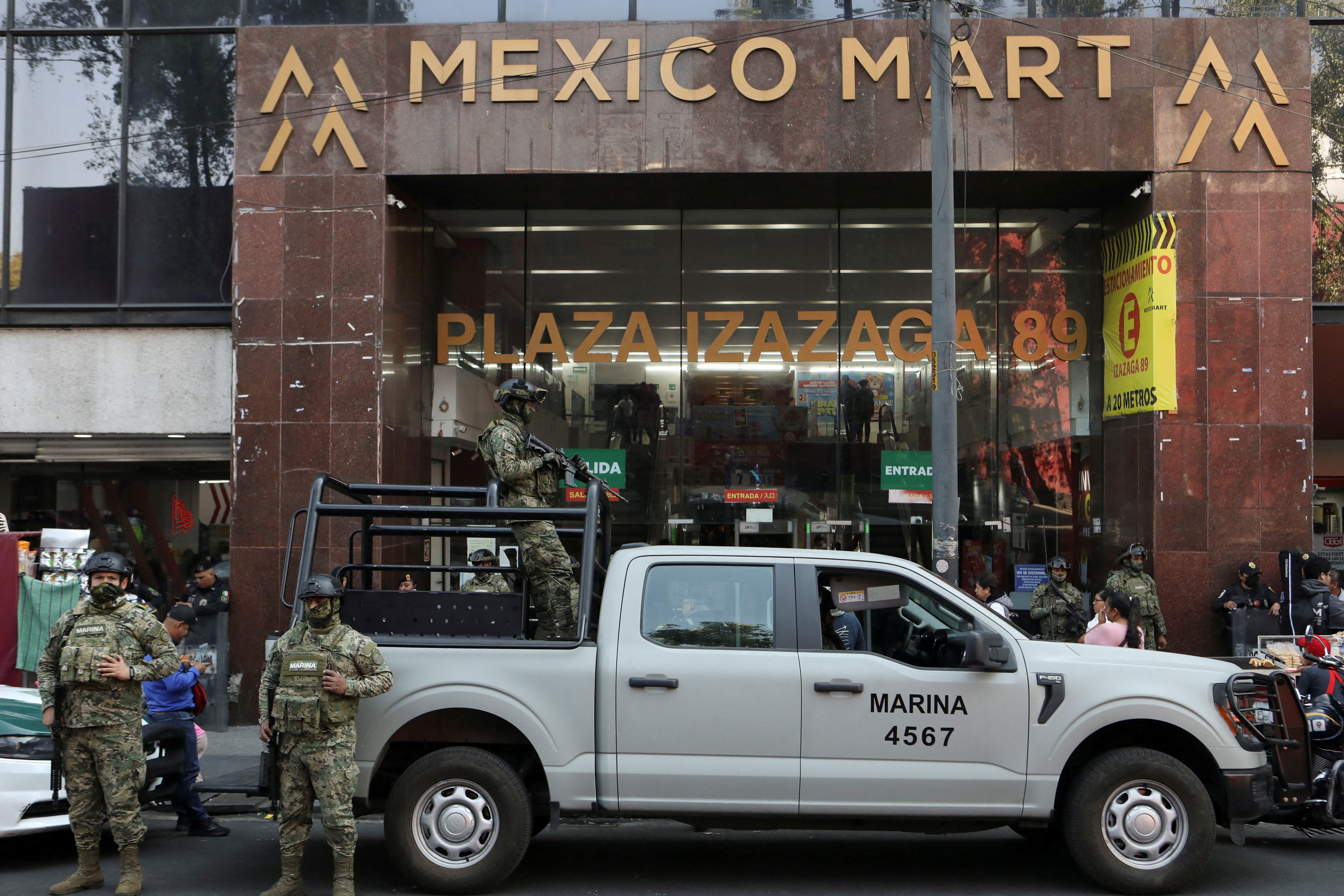
As China’s share of US imports declined during their trade war, Mexico became the US’s largest trading partner in 2023, a milestone for an economy filled with enthusiasm that jobs and factories in Asia might be “nearshored” to Mexico.
At the same time, Mexico has been importing more from China, fuelling fears it is being used as a “backdoor” into the US for Chinese companies seeking to avoid tariffs. Rubio, Trump’s secretary of state nominee, wrote a letter in September specifically warning about it.
“Congress passed a free trade deal with Mexico — not China,” he wrote. “Immediate action must be taken to prevent the Chinese Communist Party from exploiting USMCA and weaponizing this important trade deal.”
At Mexico’s largest port, Manzanillo, currently undergoing a $2.7bn expansion, more than 40 per cent of the containers that arrive come from China, according to data from shipping supply chain tracking firm VesselBot.
Container Trade Statistics data analysed by freight analytics platform Xeneta show that the number of 20ft containers shipped from China to Mexico was up 19 per cent in the first three quarters of 2024 compared with the same period last year.
But Mexican analysts point out that the US and Canada also still receive lots of Chinese imports and investment, including inputs for the auto sector.
“If you’re looking to blame someone, there are three guilty parties in USMCA, not just one,” says Enrique Dussel Peters, director of the Center for Chinese-Mexican Studies at the National Autonomous University of Mexico. “There is deep integration . . . I fear the political discussion doesn’t take into account the economic and industrial reality.”
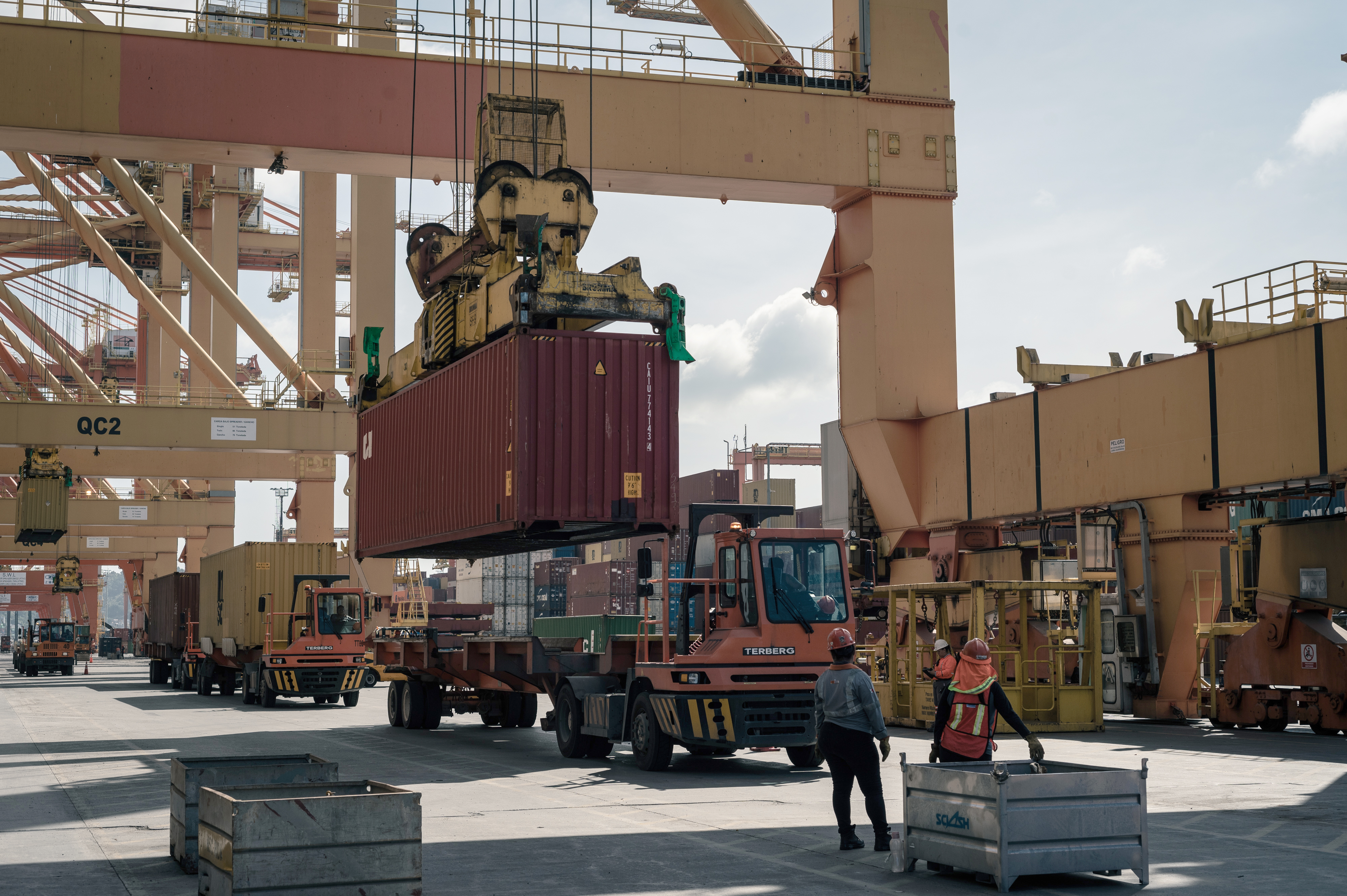
Sheinbaum has focused her public responses on a plan to substitute Chinese imports with Mexican products, and stresses the importance of the US relationship without being directly critical of Beijing. The government is looking at setting up a scheme to screen investments for any national security concerns.
“The Mexican government doesn’t want to deceive anyone. It doesn’t have a strategic relationship with China at the moment and its number one priority is working with the US and Canada,” says Luis Rosendo Gutiérrez, Mexico’s undersecretary for international trade.
He added that the idea of a Chinese backdoor via Mexico was an “incorrect narrative” given how low Chinese investment levels are and that imports are similar or higher levels in the rest of North America.
“What we’re talking about with the United States and Canada is having the same rules of the game, no more, no less,” he says.
Trump’s tariffs, if imposed, could be devastating for Mexico, which relies on the US to buy more than 80 per cent of its exports.
The Republican president-elect has shown that he is willing to use tariff threats not just to protect strategic domestic industries but also for geopolitical leverage.
While a tariff is conceptually simple — it is a tax charged on goods imported from a foreign country — its impact and who bears the economic burden often depends on how national governments and companies react to them.

Types of tariffs
AD VALOREM
TARIFF-RATE QUOTA
This tariff adds a fixed fee to
each product
Applied based on percentage
rather than a fixed value
Kicks in, or increases, after a
specific number of imports
A combination of a specific and
ad valorem tariff
For example
US imposes a flat $2,500 duty per
car imported from China
US imposes a 10% tariff on cars
imported from China
US imposes 20% tariff on first
1mn cars imported from China,
with the levy on additional
imports rising to 50%
US imposes a $1,000 duty per car
imported from China plus a
25% ad valorem levy
If the vehicle’s value is $10,000,
the importer pays $12,500
to bring it into the country
If the vehicle’s value is $10,000,
the importer pays $11,000
If the vehicle’s value is $10,000,
the importer pays $13,500
(a $1,000 flat fee plus $2,500
based on percentage)
If the vehicle’s value is $10,000,
the importer pays $12,000
per car for the first 1mn,
$15,000 after that
Who pays the tariffs?
The duty is not directly applied to the country or company doing
the exporting. Instead it falls on the importer to pay the levy
to the relevant customs authority for each item
US imposes a flat 25% ad valorem tariff on cars imported from China
If the vehicle’s value is $10,000, the importing company pays
$2,500 to bring it to the US
The preferred outcome
if the aim is to stimulate
domestic manufacturing
Some of the options available to the importer
Ask exporting
company to lower
price
Pass the cost on to
consumers
Produce or source
the good locally
Import from a
different country
Take a hit on its own
profits
A combination of these three
may also happen as they are
not mutually exclusive
The exporting company
might try to sidestep these
tariffs by re-routing the
goods via a third country that
has friendlier trade relations
with the importing nation
The importer could attempt
to find an alternative supplier
in a country not subject
to tariffs
A certain amount of
value must be added
to a good for it
to count as being
made elsewhere
Tend to involve higher
costs and inefficiencies

Types of tariffs
This tariff adds a fixed fee to each product
For example
US imposes a flat $2,500 duty per car
imported from China
If the vehicle’s value is $10,000,
the importer pays $12,500 to bring it into
the country
AD VALOREM
Applied based on percentage rather than a
fixed value
US imposes a 10% tariff on cars imported
from China
If the vehicle’s value is $10,000,
the importer pays $11,000
TARIFF-RATE QUOTA
Kicks in, or increases, after a specific
number of imports
US imposes 20% tariff on first 1mn cars
imported from China, with the levy on
additional imports rising to 50%
If the vehicle’s value is $10,000,
the importer pays $12,000 per car for
the first 1mn, $15,000 after that
A combination of a specific and ad valorem
tariff
US imposes a $1,000 duty per car
imported from China plus a 25% ad
valorem levy
If the vehicle’s value is $10,000,
the importer pays $13,500 (a $1,000 flat
fee plus $2,500 based on percentage)
Who pays the tariffs?
The duty is not directly applied to the country
or company doing the exporting. Instead it
falls on the importer to pay the levy to the
relevant customs authority for each item
US imposes a flat 25% ad valorem tariff on
cars imported from China
If the vehicle’s value is $10,000, the
importing company pays $2,500 to bring it
to the US
Some of the options available to the importer
Ask exporting
company to lower
price
A combination
of these three
may also
happen as
they are not
mutually
exclusive
Take a hit on its own
profits
pass the cost on to
consumers
Produce or source
the good locally
The preferred
outcome if
the aim is
to stimulate
domestic
manufacturing
Import from a
different country
The importer could attempt to find
an alternative supplier in a country
not subject to tariffs
Tend to involve higher
costs and inefficiencies
The exporting company might try
to sidestep these tariffs by
re-routing the goods via a third
country that has friendlier trade
relations with the importing nation
A certain amount of value must be
added to a good for it to count as
being made elsewhere

Types of tariffs
AD VALOREM
TARIFF-RATE QUOTA
This tariff adds a fixed fee to
each product
Applied based on
percentage rather than
a fixed value
Kicks in, or increases, after a
specific number of imports
A combination of a specific
and ad valorem tariff
For example
US imposes a flat $2,500
duty per car imported
from China
US imposes a 10% tariff on
cars imported from China
US imposes 20% tariff on
first 1mn cars imported
from China, with the levy
on additional imports
rising to 50%
US imposes a $1,000 duty
per car imported from China
plus a 25% ad valorem levy
If the vehicle’s value is
$10,000, the importer pays
$11,000
If the vehicle’s value is
$10,000, the importer pays
$12,500 to bring it into
the country
If the vehicle’s value is
$10,000, the importer pays
$13,500 (a $1,000 flat fee
plus $2,500 based on
percentage)
If the vehicle’s value is
$10,000, the importer pays
$12,000 per car for the first
1mn, $15,000 after that
Who pays the tariffs?
The duty is not directly applied to the country or company doing
the exporting. Instead it falls on the importer to pay
the levy to the relevant customs authority for each item
US imposes a flat 25% ad valorem tariff on cars imported from China
If the vehicle’s value is $10,000, the importing company pays
$2,500 to bring it to the US
Some of the options available to the importer
Ask exporting
company to
lower price
Pass the cost on to
consumers
Produce or source
the good locally
Import from a
different country
Take a hit on its own
profits
The preferred outcome if
the aim is to stimulate
domestic manufacturing
A combination of these three
may also happen as they are
not mutually exclusive
The exporting company might
try to sidestep these tariffs
by re-routing the goods via a
third country that has friendlier
trade relations with the
importing nation
The importer could attempt to
find an alternative supplier in
a country not subject to tariffs
A certain amount of value
must be added to a good
for it to count as being
made elsewhere
Tend to involve higher
costs and inefficiencies

Types of tariffs
AD VALOREM
TARIFF-RATE
QUOTA
This tariff adds a
fixed fee to each
product
Applied based on
percentage rather
than a fixed value
A combination of a
specific and ad
valorem tariff
Kicks in, or ramps
up, after a specific
number of imports
For example
US imposes a flat
$2,500 duty per
car imported from
China
US imposes a 10%
tariff on cars
imported from
China
US imposes 20%
tariff on first 1mn
cars imported from
China, with the levy
on additional
imports rising to
50%
US imposes a
$1,000 duty per car
imported from
China plus a 25%
ad valorem levy
If the vehicle’s value
is $10,000, the
importer pays
$12,500 to bring it
into the country
If the vehicle’s value
is $10,000, the
importer pays
$11,000
If the vehicle’s value
is $10,000, the
importer pays
$13,500 (a $1,000
flat fee plus $2,500
based on
percentage)
If the vehicle’s value
is $10,000, the
importer pays
$12,000 per car for
the first 1mn,
$15,000 after that
Who pays the tariffs?
The duty is not directly applied to the country or company doing
the exporting. Instead it falls on the importer to pay
the levy to the relevant customs authority for each item
US imposes a flat 25% ad valorem tariff on cars imported from China
If the vehicle’s value is $10,000, the importing company pays
$2,500 to bring it to the US
Some of the options available to the importer
Ask exporting
company to
lower price
Pass the cost
on to
consumers
Produce or
source the
good locally
Import from
a different
country
Take a hit on its
own profits
A combination of these three
may also happen as they are
not mutually exclusive
The preferred outcome if
the aim is to stimulate
domestic manufacturing
The importer could attempt
to find an alternative
supplier in a country
not subject to tariffs
The exporting company
might try to sidestep these
tariffs by re-routing
the goods via a third
country that has friendlier
trade relations with the
importing nation
A certain amount of value
must be added to a good
for it to count as being
made elsewhere
Tend to involve higher
costs and inefficiencies
Mexico’s biggest gains in trade with the US have come in the politically sensitive transportation and autos category, accounting for more than a third of the growth in the country’s overall share of US imports.
North American leaders are anxious to protect their national industries, with US and Canadian auto unions complaining for years of job losses to its southern neighbour and rising competition from China.
“It’s going to be an issue that’s going to be high up on the agenda, given the incoming administration’s and Congress’ significant focus on what China is doing around the world on the economic side,” Pfeiffer, of FDD Action, says.
Mexico’s National Autoparts Industry Association (INA) says only 36 Chinese companies operate in the sector, out of almost 1,000. Though their exports to the US are up 50 per cent between 2021 and 2023, this still makes up just 1.2 per cent of the total, according to INA data.
“[They] come here because of nearshoring, but it’s not a huge wave of new Tier Ones coming at all,” says Francisco González, president of the association, referring to the most important group of suppliers to automakers.
“In specific cases there was a clear invitation from the car manufacturers that needed some specific product.”
Removing China from the supply chain completely would be very difficult, he says, mentioning materials such as graphite as an example that are overwhelmingly made there. Some US auto manufacturing jobs also depend on parts made in Mexico, sometimes by Chinese firms.
“Not the US, nor Canada, nor Germany, no country could completely cut the umbilical cord [with China] 100 per cent.”
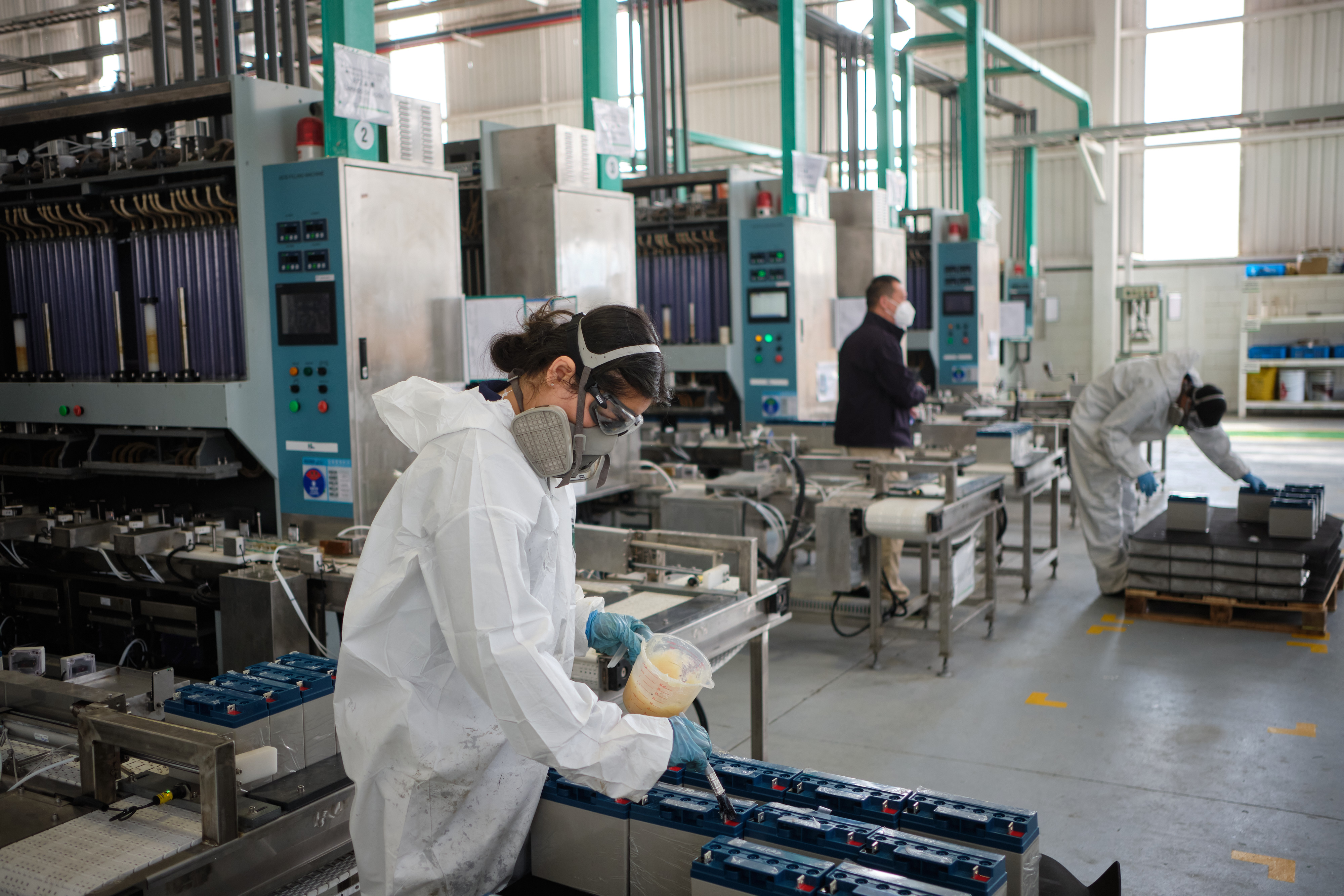
US companies such as General Motors are also some of the biggest importers of Chinese products to Mexico. One in five cars sold domestically is now made in China — such as GM’s popular Chevrolet Aveo.
But given the economic threat to the American auto industry and the potential security risk posed by connected vehicles from China, the big fear in the US is Chinese electric vehicle manufacturers like BYD and Chery setting up in Mexico and selling greater volumes or even trying to export. Though they have scouted states for sites, no factory has been announced yet.
“That’s why that got President Trump’s attention in the campaign,” Pfeiffer says.
The US could see the presence of the cars and other Chinese firms more broadly — including telecommunications operator Huawei — as an issue, he says.
“[If] you have a significant percentage of Mexicans or Americans living in Mexico driving connected Chinese cars, that eventually becomes a significant concern for the US,” he said.
“Many of the concerns that the US raised about Huawei would kind of go on steroids down the road if massive parts of the future tech economy in Mexico were dominated by connected Chinese devices.”
Mexico is gearing up for volatility as Trump’s second term approaches.
The US president-elect developed an unlikely bond with Sheinbaum’s populist predecessor President Andrés Manuel López Obrador, who shared his transactional approach to politics.
But an additional unexpected challenge has come from usually friendly Canada. Prime Minister Trudeau and other politicians indicated they were open to kicking Mexico out of USMCA over concerns about China.
Canada’s statements surprised the Mexicans, but Trudeau and his fellow leaders are also thinking of their own autoparts sector before an election in 2025.
Sheinbaum initially responded coldly to Trump’s tariffs threat. Since then, the two leaders have spoken and she has committed to continue policies that stop migrants reaching the border and discussed repairing damaged security co-operation.
She has been clear that the US is a priority but met both President Joe Biden and President Xi Jinping at the G20 this year, in a signal she wants to keep working with both.
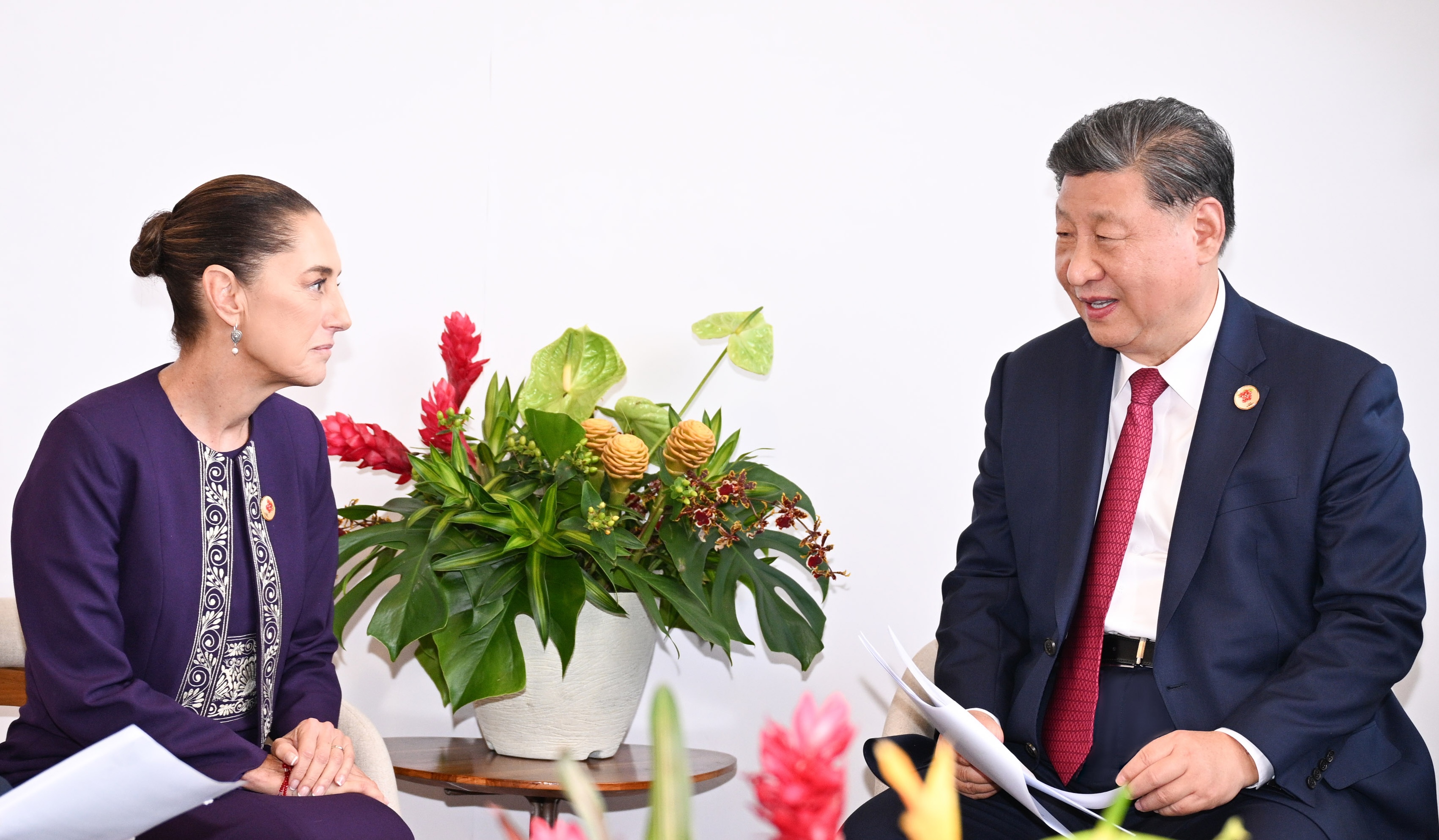
Trump described his call with Sheinbaum as “wonderful”, but the president-elect is yet to call off his threat of 25 per cent tariffs and the 2026 review of USMCA is looming.
Mexico “is sending the right messages, I don’t know if that’s going to be enough for Donald Trump”, says Baker of Ansley Consultores. “We’re going to have to do this for a long time.”
Back in the semi-arid desert in Coahuila, thousands of workers on assembly lines continue to churn out vans and pick-up trucks for export to the US. But the uncertainty around the bilateral relationship is hanging over Alianza and other industrial spaces across Mexico.
“After the pandemic, with nearshoring, there was a big boom in visits, in clients looking to set up,” Alianza’s Cantú says. “Definitely today there is a calm, a pause in the market where lots of them are evaluating what will happen with the policies or the geopolitics of the US and Asia.”
